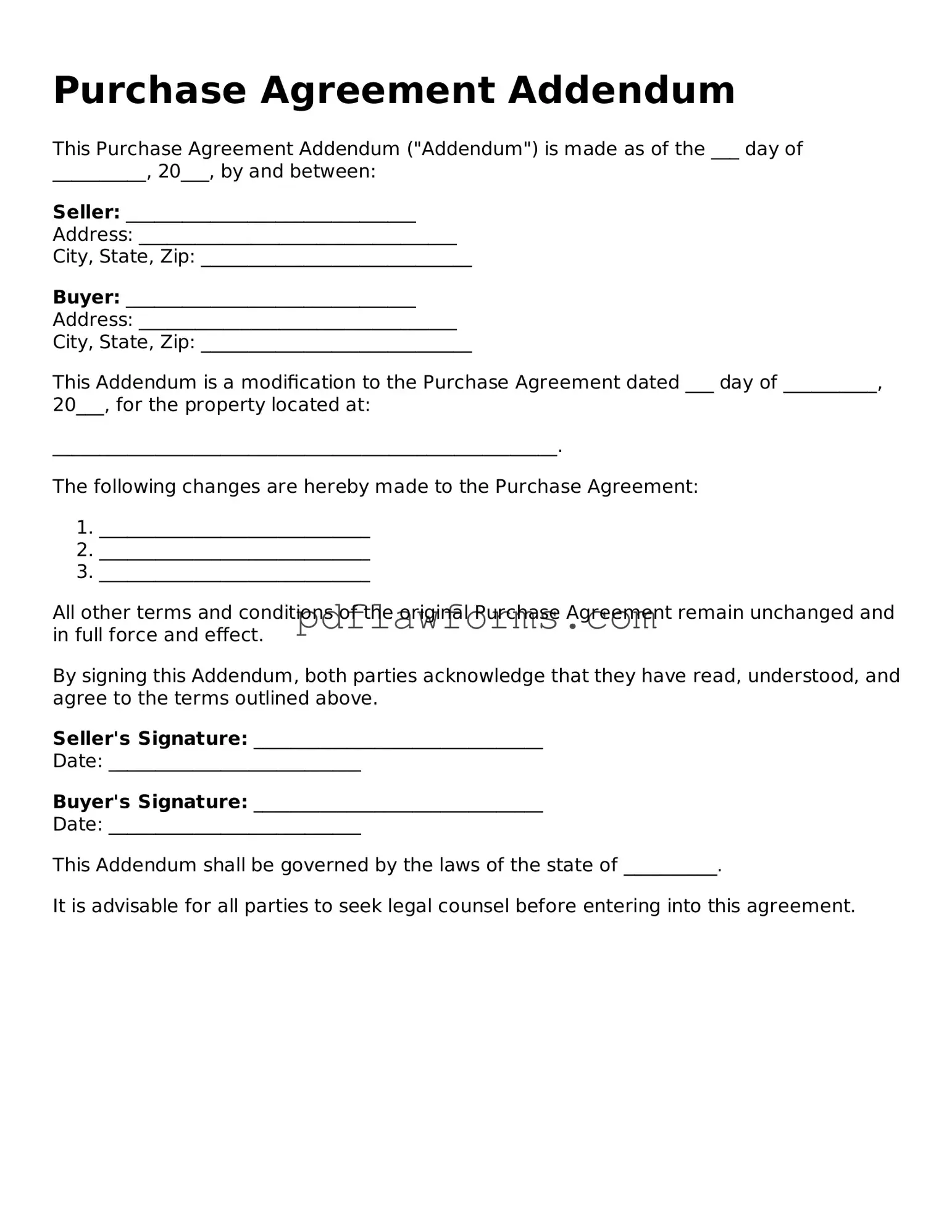Filling out a Purchase Agreement Addendum form can be a complex task. Many individuals make common mistakes that can lead to misunderstandings or complications later on. Awareness of these pitfalls is crucial for ensuring a smooth transaction.
One frequent mistake is failing to include all necessary details. Buyers and sellers may overlook important information such as the property address, purchase price, or specific terms of the agreement. Omitting these details can create confusion and may even invalidate the addendum.
Another common error involves not clearly defining contingencies. Contingencies are conditions that must be met for the agreement to be binding. If these are vague or poorly articulated, it can lead to disputes down the line. It is essential to be specific about what conditions need to be fulfilled.
People often forget to date the addendum. A missing date can lead to questions about when the agreement takes effect. It is important to include the date to provide clarity and ensure that all parties are on the same page regarding timelines.
In some cases, individuals may neglect to sign the addendum. A signature is crucial for the document to be legally binding. Without the proper signatures from all parties involved, the addendum may not hold up in a legal context.
Another mistake involves using vague language. Ambiguity can lead to different interpretations of the terms outlined in the addendum. Clear and precise language is vital to avoid potential conflicts and misunderstandings.
People sometimes fail to review the entire purchase agreement before completing the addendum. It is essential to understand how the addendum fits into the overall agreement. Overlooking relevant sections can lead to inconsistencies that may complicate the transaction.
Additionally, individuals may ignore local laws and regulations. Each state has specific rules regarding real estate transactions. Familiarity with these regulations is important to ensure compliance and avoid legal issues.
Finally, individuals often not seek professional guidance when needed. While it may seem straightforward, real estate transactions can be intricate. Consulting a legal expert can provide valuable insights and help avoid mistakes that could have lasting consequences.
